Tibetan monasteries are an integral part of Tibetan culture and Buddhism. They serve as spiritual centers and places of worship for monks and nuns, as well as a source of education and guidance for the local community. Tibetan monasteries are known for their stunning architecture, colorful murals, and peaceful atmosphere.
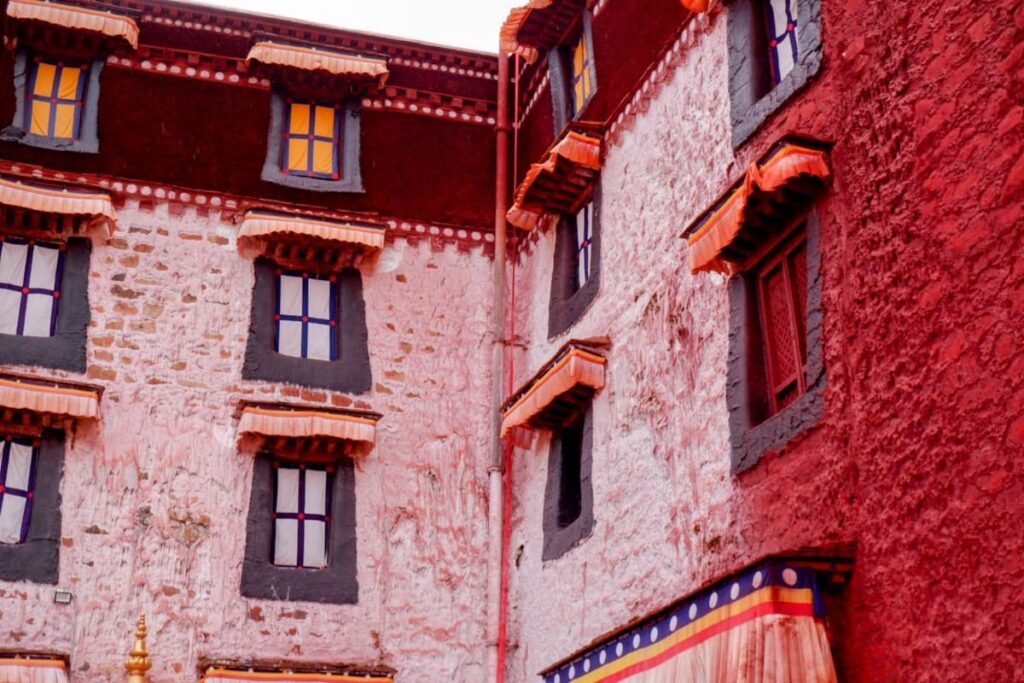
Introduction to the significance of Tibetan monasteries
Tibetan monasteries hold great significance as important cultural and religious sites. These monasteries are not only places of worship and spiritual practice, but also serve as centers for education, art, and community. Tibetan Buddhism is deeply rooted in the traditions and teachings of these monasteries, which have been passed down through generations.
Visiting a Tibetan monastery offers a unique opportunity to immerse oneself in the rich Tibetan culture and witness the devotion and rituals of the monks. The architecture of these monasteries is often awe-inspiring, with intricate designs and vibrant colors. Inside, one can find beautifully adorned prayer halls, statues of Buddha and other deities, and ancient scriptures.
Monastic life plays a crucial role in preserving the Tibetan identity and promoting the values of compassion, wisdom, and mindfulness. Monks dedicate their lives to studying Buddhist philosophy and scriptures, practicing meditation, and engaging in acts of kindness and service to others. The monasteries also provide a space for monks to receive teachings from esteemed spiritual masters and engage in debates to deepen their understanding of Buddhist teachings.
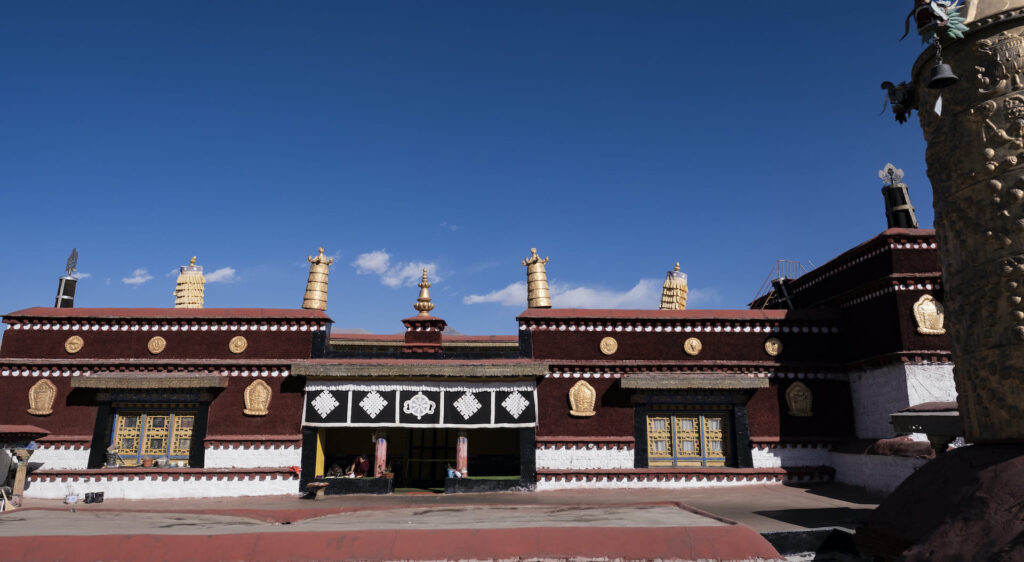

These monasteries also serve as important centers for the preservation and promotion of Tibetan art and culture. From intricate thangka paintings to delicate wood carvings, monasteries are adorned with artistic masterpieces that depict Buddhist deities, historical events, and philosophical concepts. Monastic institutions also hold festivals and ceremonies throughout the year, showcasing traditional Tibetan music, dance, and rituals.
Moreover, these monasteries often act as community hubs, providing support to local communities through various social welfare initiatives. They offer medical clinics, schools, orphanages, and vocational training centers to address the needs of the surrounding areas. Monasteries also play a vital role in disaster relief efforts, providing shelter and assistance during times of crisis.
Tibetan monasteries are not just religious institutions but also serve as cultural and educational centers. They are filled with the wisdom of Buddhist teachings, vibrant artistic expressions, and a deep sense of community.
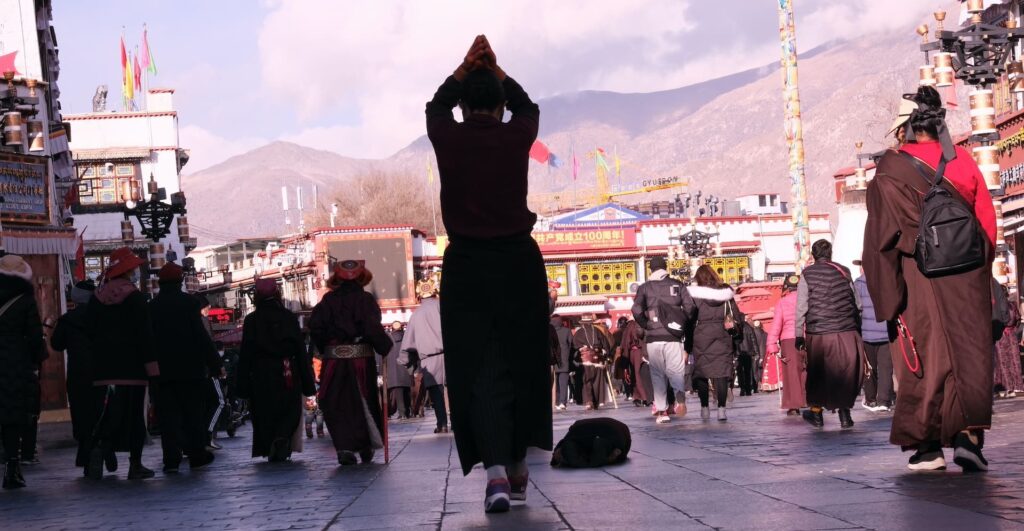

Visiting these monasteries offers a profound and enriching experience, allowing individuals to connect with Tibetan spirituality, culture, and the enduring traditions of Tibetan Buddhism. There are hundreds of Tibetan Buddhist monasteries in Tibet. However, I brought here the top 7 monasteries in Tibet that you must visit during your trip to Tibet.
The top 7 monasteries in Tibet
1. Drepung Monastery
Drepung Monastery is widely regarded as one of the largest and most important monasteries in Tibet. Located on the outskirts of Lhasa, the capital city, it holds great historical and cultural significance.
The monastery was founded in 1416 by Jamyang Choge Tashi Palden, one of the disciples of Tsongkhapa, the founder of the Gelug school of Tibetan Buddhism. Drepung Monastery quickly became a center for Buddhist learning and attracted thousands of monks from all over Tibet. At its peak, it housed around 7,000 monks and had a reputation as a prestigious institution.
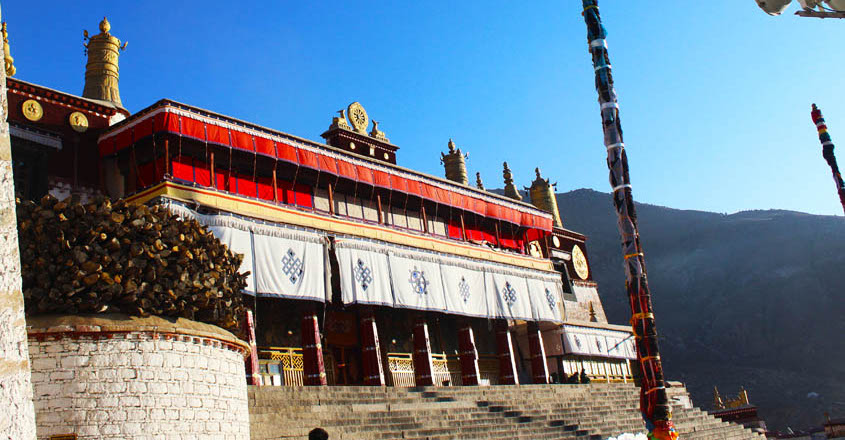

Drepung Monastery played a crucial role in the political and religious affairs of Tibet. It served as the residence of the Dalai Lamas, who are considered the spiritual leaders of Tibetan Buddhism. The Dalai Lamas would often receive their education and training at Drepung before assuming their duties. The monastery had close ties with the ruling class and was involved in the administration of Tibet.
Architecturally, Drepung Monastery is a remarkable sight. Its buildings are arranged in a grand complex, with white-washed walls and golden roofs that gleam under the Tibetan sun. The monastery is divided into several colleges, each with its own assembly hall, living quarters, and chapels. These halls are adorned with intricate murals and statues, showcasing the rich artistic heritage of Tibetan Buddhism.
The cultural aspects of Drepung Monastery are equally fascinating. The monastery hosts a variety of religious festivals and rituals throughout the year, attracting pilgrims and visitors from all over the world. Monks engage in daily prayers, debates, and meditation practices, maintaining the spiritual traditions that have been passed down for centuries.
Despite facing challenges and disruptions during the Cultural Revolution in China, Drepung Monastery continues to be a vibrant center of Buddhist learning and practice. It stands as a testament to the resilience and perseverance of Tibetan Buddhism, drawing visitors who seek to immerse themselves in its rich history and spiritual teachings.
2. Sera Monastery
Sera Monastery is a renowned monastic university located in Tibet. It was founded in 1419 and has since become one of the largest and most important monasteries in the region. The monastery attracts visitors from all over the world who come to learn about Tibetan Buddhism and witness its rich cultural heritage.
One of the main reasons why Sera Monastery is highly regarded is its role in preserving Tibetan Buddhism’s philosophical traditions. The monastery has been a center for the study and teaching of Buddhist philosophy for centuries. Monks at Sera Monastery engage in rigorous academic pursuits, studying various texts and engaging in deep philosophical discussions. This dedication to study and intellectual growth has helped preserve and pass on the wisdom of Tibetan Buddhism to future generations.
One of the most famous aspects of Sera Monastery is the debating sessions that take place daily. These debates are an integral part of the monastic education system and are open to the public. During these sessions, monks engage in lively and animated debates on various topics related to Buddhist philosophy. The debates are highly structured, with one monk acting as the questioner and another as the defender of a particular viewpoint. The debates showcase the depth of knowledge and critical thinking skills of the monks, as well as their ability to articulate complex ideas.


The debating sessions at Sera Monastery are not only important for the education and training of the monks but also serve as a means of disseminating Buddhist teachings to the wider community. Visitors to the monastery can witness these debates firsthand and gain a deeper understanding of Tibetan Buddhism’s philosophical principles. The debates are a unique and captivating experience that highlights the intellectual vibrancy and richness of Tibetan Buddhism.
Sera Monastery is a renowned monastic university in Tibet that plays a vital role in preserving Tibetan Buddhism’s philosophical traditions. Through its rigorous academic pursuits and famous debating sessions, the monastery fosters intellectual growth and disseminates Buddhist teachings to both monks and the wider community. Sera Monastery stands as a testament to the enduring importance of Tibetan Buddhism and its contribution to the world of spirituality and philosophy.
3. Ganden Monastery
Ganden Monastery is a renowned Tibetan Buddhist monastery located in the Dagzê County of Lhasa, Tibet. It holds a significant place in Tibetan history as the first Gelugpa monastery, which is one of the major schools of Tibetan Buddhism. The monastery was established in 1409 by Tsongkhapa, the founder of the Gelugpa sect, and it continues to be an important spiritual center for followers of this tradition.
Ganden Monastery holds great historical importance due to its association with Tsongkhapa. He was a prominent Buddhist scholar and teacher who sought to revive the purity and authenticity of Tibetan Buddhism during a time when the religion had become diluted with various cultural and political influences. Tsongkhapa’s teachings and emphasis on monastic discipline laid the foundation for the Gelugpa sect, which became one of the most influential schools of Tibetan Buddhism.
One of the striking features of Ganden Monastery is its unique architectural design. The monastery is built in a traditional Tibetan style, with white buildings adorned with colorful paintings and intricate carvings. It is situated on top of Wangbur Mountain, providing breathtaking panoramic views of the surrounding landscape. The natural beauty of the area, with its rugged mountains and lush valleys, adds to the overall serenity and charm of Ganden Monastery.


Inside the monastery, visitors can explore various halls, chapels, and prayer rooms that are adorned with exquisite Buddhist artwork and statues. The main assembly hall, known as Tsokchen, is particularly impressive with its grand size and ornate decorations. It serves as a venue for important religious ceremonies and gatherings.
Ganden Monastery also serves as a living monastery, with monks residing within its premises. Visitors have the opportunity to witness their daily rituals and engage in spiritual activities such as meditation and chanting. The serene ambiance and peaceful atmosphere provide a perfect setting for introspection and contemplation.
Overall, Ganden Monastery is not only a significant religious site but also a place of immense cultural and historical value. Its association with Tsongkhapa and the Gelugpa sect, along with its unique architecture and scenic beauty, make it a must-visit destination for those interested in Tibetan Buddhism and Tibetan culture.
4. Samye Monastery
Samye Monastery holds a significant place in Tibetan Buddhism as it is considered the first Buddhist monastery in Tibet. Built-in the 8th century, this monastery has played a crucial role in the development and propagation of Tibetan Buddhism.
The establishment of Samye Monastery marked a turning point in the history of Tibetan Buddhism. It was founded by the great Indian master, Padmasambhava, also known as Guru Rinpoche, and King Trisong Detsen. Together, they initiated the translation of Buddhist scriptures into Tibetan and introduced various Buddhist practices and teachings to the Tibetan people. As a result, Samye Monastery became a center of learning and spiritual practice, attracting numerous scholars and practitioners from all over Tibet.


One of the distinctive features of Samye Monastery is its mandala-shaped design. The entire monastery is laid out in the form of a mandala, which is a sacred geometric pattern symbolizing the universe. This unique layout represents the enlightened mind and serves as a visual guide for practitioners on their spiritual path. The main temple, known as the Utse, is located in the center of the mandala and represents the axis mundi, connecting heaven and earth.
In addition to its architectural significance, Samye Monastery is also home to numerous ancient relics and sacred artifacts. These relics include statues, thangkas (religious paintings), scriptures, and ritual objects that have been preserved for centuries. These artifacts hold great religious and cultural value and are revered by both practitioners and scholars alike.
Samye Monastery holds a special place in Tibetan Buddhism as the first Buddhist monastery in Tibet. Its establishment marked a crucial milestone in the development and propagation of Tibetan Buddhism. The distinctive mandala-shaped design and ancient relics found within the monastery further contribute to its significance and make it a must-visit destination for those interested in Tibetan Buddhism and its rich history.
5. Tashilhunpo Monastery
Tashilhunpo Monastery is a prominent Tibetan Buddhist monastery located in Shigatse, Tibet. It serves as the seat of the Panchen Lama, who is the second-highest spiritual leader in Tibetan Buddhism after the Dalai Lama. The monastery holds great significance in Tibetan Buddhism and plays a crucial role in the recognition of the Panchen Lama.
Tashilhunpo Monastery is known for its rich history and cultural heritage. It was founded in 1447 by the first Dalai Lama, Gyalwa Gendun Drup, and has since become an important center for religious and philosophical teachings. The monastery has been a place of learning and spiritual guidance for countless Tibetan Buddhists over the centuries.
One of the notable features of Tashilhunpo Monastery is its grand architectural design. The monastery complex is spread across a vast area and consists of numerous buildings, temples, and courtyards. The main assembly hall, known as the Maitreya Temple, is particularly famous for housing a stunning 85-foot-tall statue of the Maitreya Buddha. This statue is adorned with precious jewels and attracts thousands of pilgrims and tourists every year.
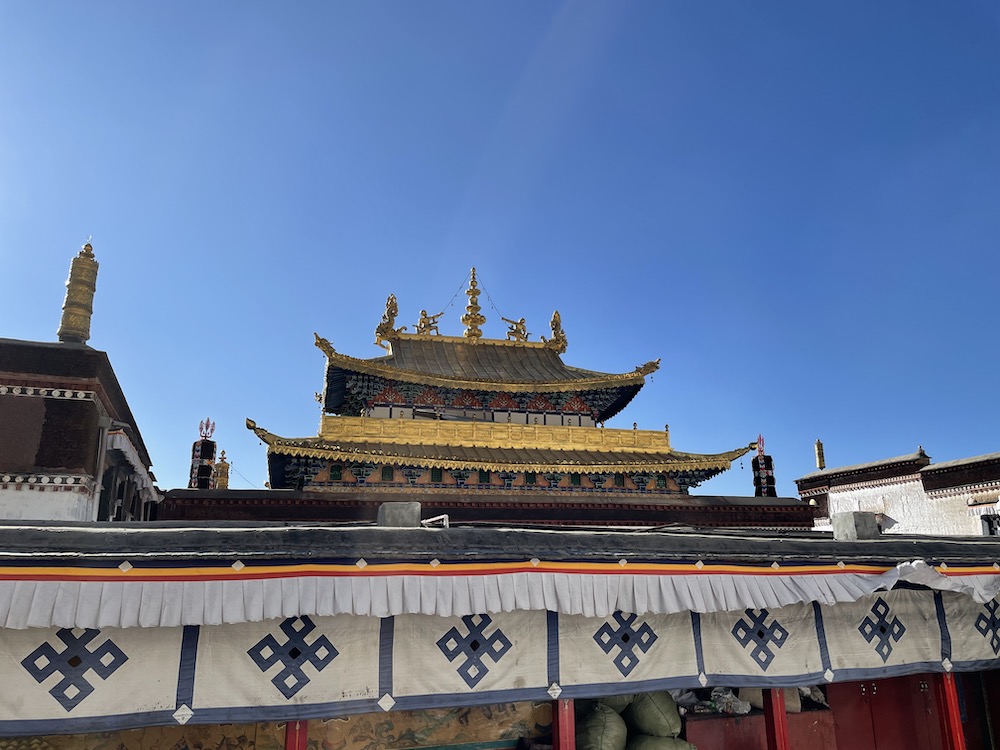

The recognition of the Panchen Lama is another important aspect of Tashilhunpo Monastery. The Panchen Lama is traditionally responsible for recognizing the reincarnation of the Dalai Lama, and his role holds immense significance in the Tibetan Buddhist hierarchy. The process of identifying the Panchen Lama involves a complex system of searching for the reincarnated soul, which often involves rituals and divination methods conducted by senior monks at Tashilhunpo Monastery.
Tashilhunpo Monastery is a revered institution in Tibetan Buddhism, serving as the seat of the Panchen Lama and playing a vital role in the recognition of spiritual leaders. Its grand buildings and the iconic Maitreya statue make it a visually stunning destination for both religious and cultural enthusiasts.
6. Sakya Monastery
Sakya Monastery is a significant institution in Tibetan Buddhism, serving as the principal monastery of the Sakya sect. Located in Sakya County, Tibet, it holds great historical and religious importance. The monastery was founded in the 11th century and has since played a crucial role in Tibetan politics and religion.
Historically, Sakya Monastery was closely associated with the ruling Sakya dynasty, which held political power in Tibet during the 13th and 14th centuries. The monastery became a center of political and religious authority, with its leaders holding positions of power within the Tibetan government. This close connection between the monastery and political leadership gave Sakya Monastery a unique position in Tibetan society.
The architecture of Sakya Monastery is distinctive and reflects the influence of both Tibetan and Mongolian styles. The main assembly hall, or Tsogchen, is an impressive structure adorned with intricate artwork and vibrant colors. The monastery also features various chapels, libraries, and living quarters for the resident monks. The architectural design of Sakya Monastery showcases the rich cultural heritage of Tibetan Buddhism.


One of the most valuable aspects of Sakya Monastery is its extensive collection of Buddhist scripture. The monastery houses a vast number of ancient manuscripts, including important texts and teachings of Tibetan Buddhism. These scriptures are carefully preserved and considered precious treasures of the faith. Scholars and practitioners from all over the world visit Sakya Monastery to study and learn from these valuable resources.
Sakya Monastery holds a significant place in Tibetan Buddhism, serving as the principal monastery of the Sakya sect. Its historical background, association with Tibetan politics, unique architecture, and valuable collection of Buddhist scripture make it a remarkable institution within Tibetan Buddhism. The monastery continues to be a center of learning, spirituality, and cultural heritage in the region.
7. Rongbuk Monastery
Rongbuk Monastery is renowned as the highest monastery in the world and is located near Mount Everest, the tallest peak on Earth. Situated at an altitude of 5,154 meters (16,900 feet), reaching Rongbuk Monastery is no easy feat. The journey to this remote and sacred site is challenging, requiring travelers to navigate treacherous mountain roads and endure high altitudes. However, the arduous journey is well worth it for the breathtaking views and spiritual significance that await.
The path to Rongbuk Monastery is not for the faint of heart. Travelers must acclimate to the thin air at high altitudes, which can be physically demanding. The roads leading to the monastery are rugged and often subject to harsh weather conditions, making them difficult to traverse. It is essential to be prepared with proper clothing, equipment, and a reliable vehicle to ensure a safe and successful journey.
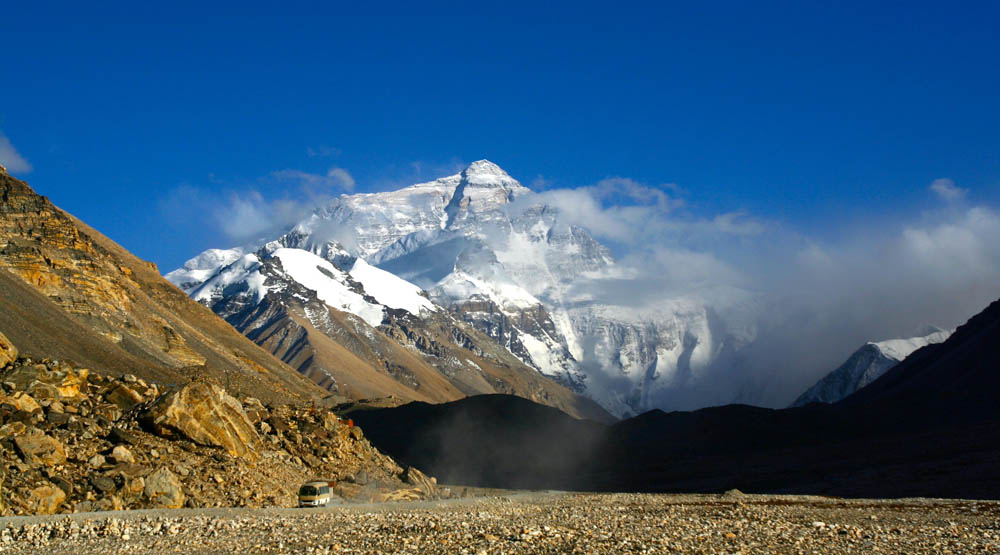

Upon reaching Rongbuk Monastery, visitors are rewarded with awe-inspiring vistas of the surrounding Himalayan peaks, including the majestic Mount Everest. The monastery itself is a sight to behold, with its striking architecture nestled amidst the incredible mountain landscape.
The spiritual significance of Rongbuk Monastery is deeply rooted in Tibetan Buddhism, attracting pilgrims and travelers seeking enlightenment and a connection to the divine. It offers a place for reflection, meditation, and prayer, allowing visitors to immerse themselves in the tranquility and serenity of the high Himalayas.
The panoramic views from Rongbuk Monastery are truly breathtaking. Standing in the presence of the world’s highest peak and surrounded by the rugged beauty of the Himalayas, one cannot help but feel a sense of awe and reverence for nature’s grandeur. The vastness and power of these mountains inspire a profound appreciation for the natural world and our place within it.
Rongbuk Monastery is a remarkable destination for those seeking adventure, spiritual enlightenment, and a connection to the highest peaks on Earth. The challenging journey to reach this sacred site is rewarded with unparalleled views and a profound sense of awe. Whether as a pilgrimage or as an exploration of nature’s wonders, a visit to Rongbuk Monastery is an unforgettable experience that leaves a lasting impression on all who venture there.
Conclusion
In conclusion, Tibetan monasteries play a crucial role in preserving Tibetan culture and spirituality. They serve as centers of learning, meditation, and religious practice. The diversity of Tibetan monasteries is vast, with each monastery having its own unique traditions, rituals, and architectural styles. From the famous Potala Palace in Lhasa to the remote monasteries nestled in the Himalayas, each monastery offers a glimpse into the rich heritage of Tibet.
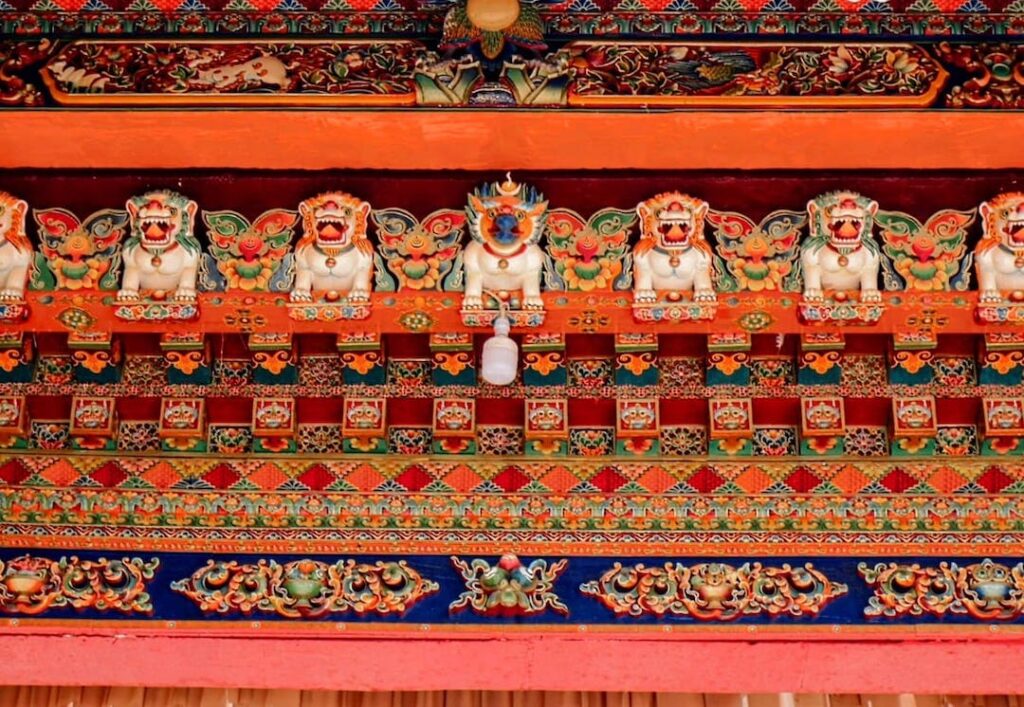

For travelers seeking an authentic experience of Tibetan culture and spirituality, visiting these monasteries is highly recommended. It provides an opportunity to witness monks in prayer, participate in religious ceremonies, and learn about Tibetan Buddhism. The serene and peaceful atmosphere of the monasteries also offers a chance for introspection and spiritual growth.
Beyond the religious and cultural aspects, Tibetan monasteries are often located in stunning natural landscapes, surrounded by mountains, lakes, and forests. This makes them ideal destinations for nature lovers and adventure seekers.
In conclusion, Tibetan monasteries are not only important religious institutions but also significant cultural and historical landmarks. They offer a unique and enriching travel experience for those who seek to understand the essence of Tibetan spirituality and immerse themselves in the beauty of the Himalayan region.

[…] cultural significance, unique architecture, and breathtaking views make it an iconic landmark and a must-visit destination for travelers seeking to immerse themselves in the beauty and spirituality of […]